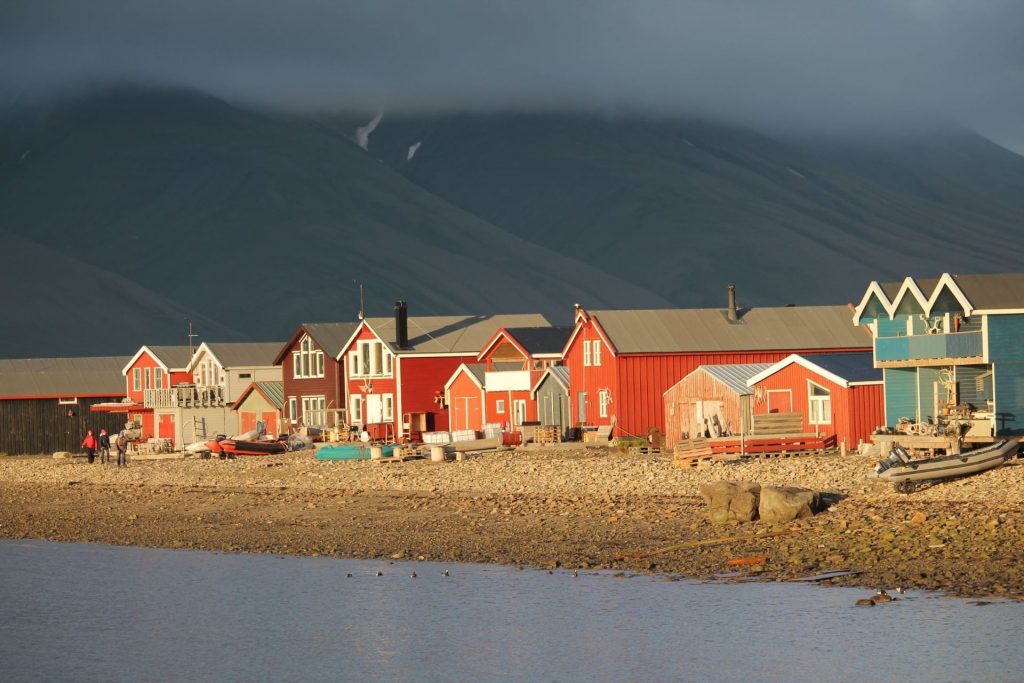Looking back … Scandinavian lockdown fika 20-21
By Jakob Stougaard-Nielsen, on 2 September 2021
Written by Izabella Wodzka (PhD Student, SELCS-CMII)
During the academic year 2020-21, a year full of unprecedented events, difficult situations, and dramatic turns, Scandinavian Studies staff and students did not give up on social activities. We were forced to move to various online platforms as many of us were, and some still are, away from London and the UK. That did not stop us from meeting every Monday (later Friday) to have a cup of good old fika together and chat about everything and anything Nordic.

Tjørnuvík in Faroe Islands, photo credit: Izabella Wódzka
We discussed and zoomed in on topics that varied in their geographical, cultural, and temporal scope, from knitting and wool production in the Nordic countries to migration and belonging. We ventured into the Arctic guided by one of our own, Dr Anne Grydehøj, who kindly shared her images and experiences from the island of Svalbard. We looked at pictures from as far away as Greenland and the Faroe Island, courtesy of our staff and students, and we marvelled at the famous aurora borealis (though our amateur photography did not do it justice). Certainly, one of the most hotly debated topics was the one about knitwear and knitting. This popular pastime is more of a necessity in the Nordic areas, and has a rich history with almost every country and region in the North claiming their own distinctive patterns. We had a look at one such jumpers from the Faroes, and we wondered about similarities and the incredible multitude of motives that go into the intricate details on various knitwear items.

Houses in Svalbard, photo credit: Anne Grydehøj
The first term finished with a special edition of our fika meetings, dedicated to Jule-time customs in the region. Exchanging favourite recipes and traditions surrounding this festive season was one of the highlights of the dark and cold winter. In most of the Nordic countries, 13 December marks the Day of Santa Lucia, originally stemming from a Christian legend, these days it is more of a secular celebration with children dressing up in white gowns and wearing wreaths with candles in them. Some of us had the chance to dress up as Santa Lucia and sing the traditional songs, while others reminisced about julebryg – a distinctly Danish observance of brewing a special batch of Christmas beer released on the so-called J-Dag. There was certainly something for everyone!
In the second term we talked about the legacy of the Vikings and their lasting impact on not only Scandinavia but also the UK. This was surely one of the most liked sessions as we are currently experiencing something of a Viking revival, with an endless stream of Viking-themed movies, tv series, books, and museum exhibitions. We agreed on one thing – the Viking Ship Museum in Oslo is a must-see for anyone traveling to Norway! On another occasion, we turned to Netflix and, broadly speaking, the representation of the North in media. It turns out there’s a prolific output of Nordic-made films and series worth watching, not only on Netflix, and our students and staff shared their favourites with classics such as The Killing and The Bridge still topping the list. But the conversation about Nordic culture and history would not be complete without a discussion about literature, especially for children, and the beloved characters such as the Finnish Moomins and the Swedish Pippi Långstrump from Astrid Lindgren’s world-famous books. While researching this subject, we also encountered a more grim and serious side of Nordic children’s literature, where some authors don’t shy away from themes of death, grief, loss, discrimination, and growing up in small, remote communities.
We hope to continue our social meetings in either digital or hybrid form in the next academic year. It is a unique opportunity for both staff and students to get to know each other better, stay in touch, and expand their knowledge of various aspects of Scandinavian Studies as a field of research. Thank you to everyone who showed up and made these coffee meetings possible! Mange tak!
Follow UCL Scandinavian Studies on Instagram @scandistudiesucl
 Close
Close

